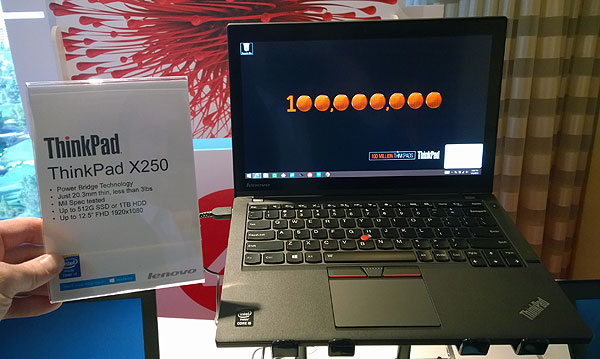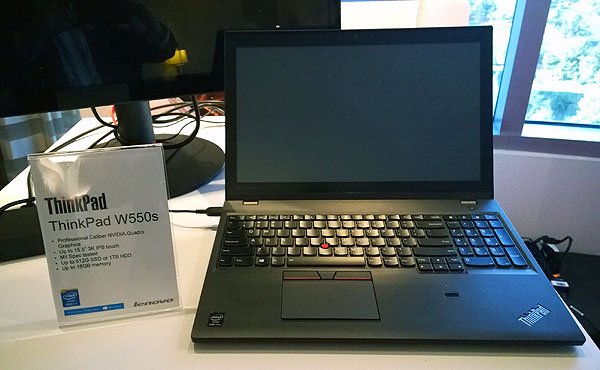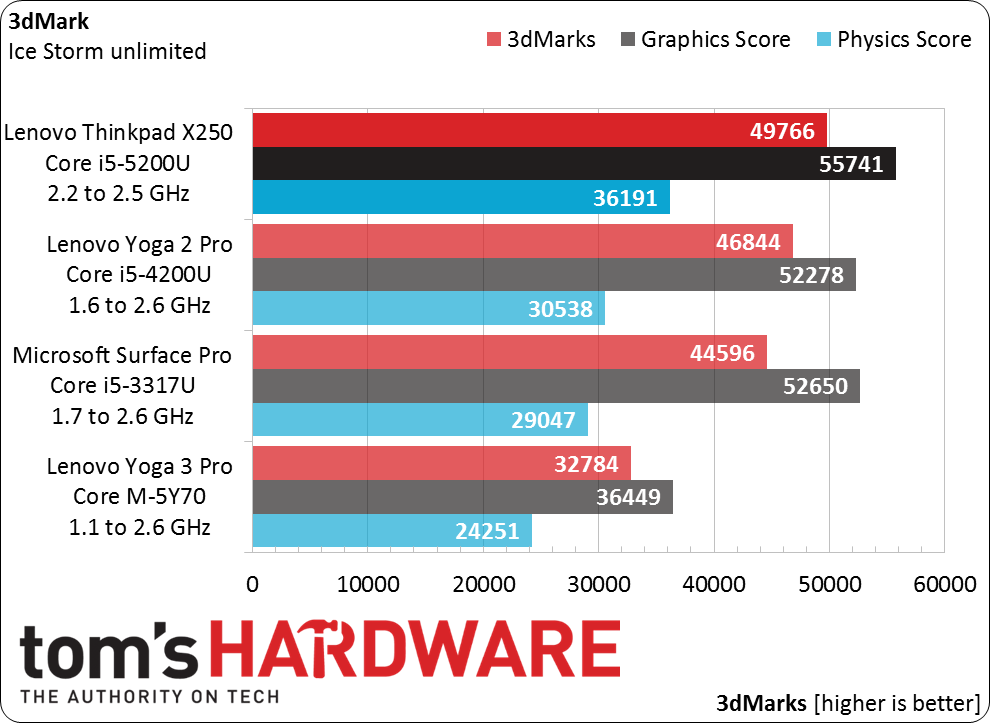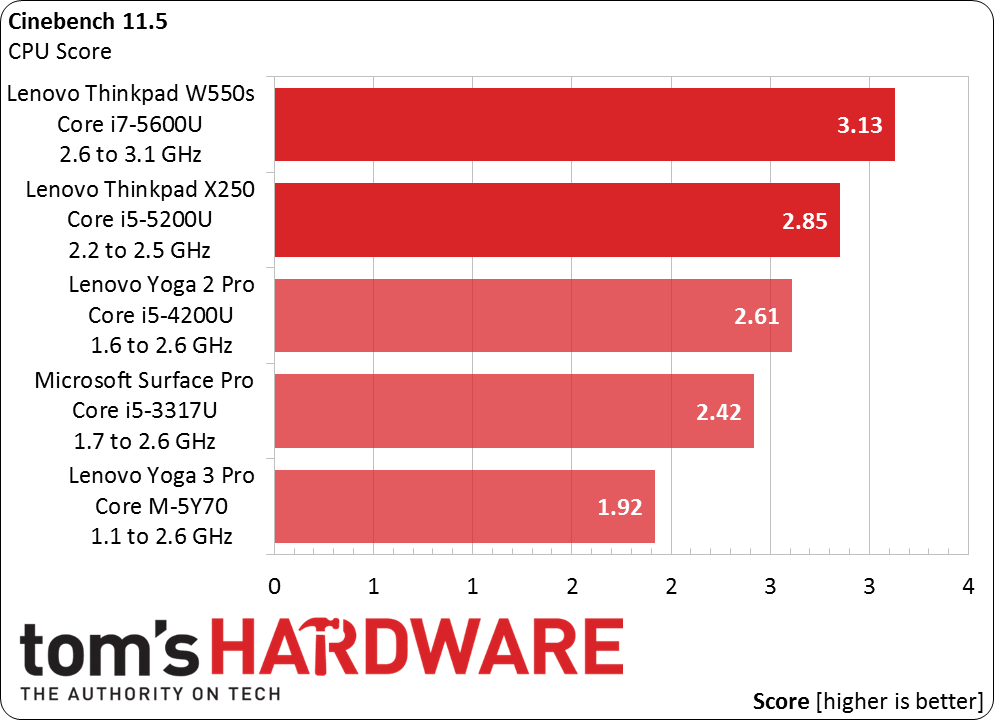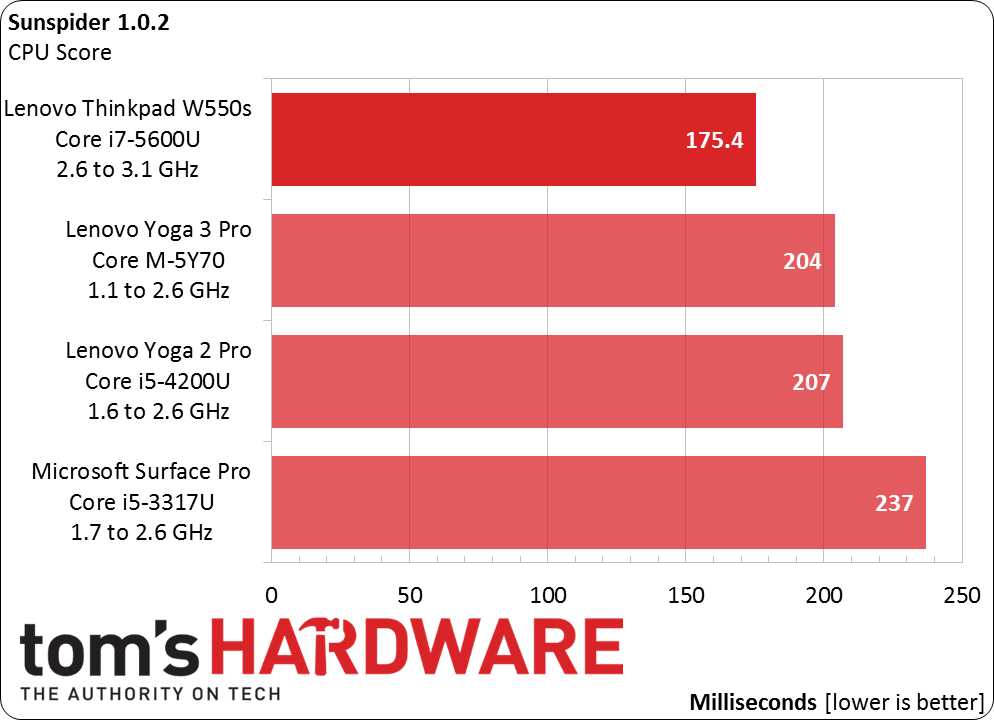Intel's Broadwell-U Core i5-5200U And i7-5600U: The First Benchmarks
Live from CES, Tom's Hardware delivers the first comparison benchmark results from the Broadwell-U based Core i5-5200U and Core i7-5600U!
Lenovo was kind enough to give us access to some of its new Broadwell-U powered noteboooks today, and we used the short time we had to run a few quick comparison benchmarks.
The first of these is Lenovo's ThinkPad X250. At a svelte 20.3 mm in depth, it weighs less than three pounds and can be purchased with up to a 512 GB SSD or a 1 TB hard disk, with a 12.5" FHD 1080p screen. Powered by Intel's Broadwell-U Core i5-5200U processor and HD 5500 graphics, it's a good representation of the kind of product that we expect to replace previous-generation ultrabooks that run on the popular Core i5-4200U, a processor found in a wide range of products including Lenovo's Yoga 2 Pro and Microsoft's Surface 3. In fact, we have included Yoga 2 Pro benchmark results in order to compare them.
The ThinkPad W550s, on the other hand, is a powerful workstation-class notebook armed with the new Core i7-5600U. It features a 15.5" IPS touchscreen with a 3k resolution, up to 16 GB of onboard RAM, and Nvidia's Quadro K620M professional discrete graphics chipset.
Before we discuss the benchmark results, we'd like you to keep in mind that these tests were performed on pre-production prototype hardware with non-optimized BIOSes. It's likely that these products will be improved before they make their way to consumers. As final versions become commercially available in the future, we will bring you updated bench numbers.
In addition to the Yoga 2 Pro, we included Lenovo's Yoga 3 Pro in our results to show what Broadwell-Y can do in comparison. As we mentioned earlier in the article Intel Reveals Details on Broadwell-U at CES, Broadwell-U leverages two different processor die. Both the Core i5-5200U and Core i7-5600U are based on the smaller die with Intel HD 5500 graphics. This is virtually the same die as the Core M-5Y70, the main difference being that the Core M is limited to a 4.5 Watt TDP, while the Core i5-5200U and Core i7-5600U are limited to more than three times that at 15 Watts. We haven't yet had the opportunity to benchmark a processor that uses the larger die that offers Intel HD 6000 and Iris 6100 graphics onboard, but we'll keep trying. (We should also mention that the Core i5 has 3 MB of L3 cache, while both the Core M and Core i7 boast 4 MB of the stuff.)
For the sake of comparison, we've also included the original Surface Pro, equipped with a 17 Watt Ivy Bridge Core i5-3317U.
Note that the ThinkPad W550s is excluded from this benchmark. This is because, despite playing with driver settings, we were unable to be sure that the 68,913 graphics result it produced was generated by the integrated HD 5500 chipset and not the Nvidia Quadro K620M. According to Intel's spec sheet, the Core i5-5200U and Core i7-5600U both share the HD 5500 graphics specifications with a mere 50 MHz spread, so it's hard to believe this would be responsible for such a large 13,000 difference in the graphics score.
What we can say for sure is that, in this benchmark run, the Core i5-5200U delivers about a 6 percent increase in graphics power and about a 17 percent increase in physics calculation prowess compared to the Core i5-4200U.
Get Tom's Hardware's best news and in-depth reviews, straight to your inbox.
When it comes to the Cinebench 11.5 rendering benchmark, we see a healthy spread between these processors. The Core M-5Y70 suffers due to its low power requirements, causing it to throttle under this heavy processing load, but the rest of these products have a lot more TDP to work with. The Broadwell-U Core i5-5200U and Core i7-5600U perform admirably here and enjoy a meaningful performance increase over their predecessors.
The Sunspider Javascript benchmark shows a strong lead by the Core i7-5600U. The Core i5-5200U numbers didn't make sense, however, with a 218 ms result that doesn't make sense next to the Core M-5Y70 and Core i5-4200U. Since we ran this test on pre-production hardware, we decided to leave this result out of the chart, but we'll be sure to revisit this once we have consumer-available hardware in our hands.
For now, that's all the benchmarks we have to show. Like Haswell and Ivy Bridge before them, Broadwell looks like a solid upgrade from previous generation parts, but not with a lot of wow factor. Perhaps the SKUs with HD 6000 and Iris 6100 graphics chipsets will give us more to get excited about. Intel also claims that Broadwell-U processors will deliver a battery life advantage over Haswell-U processors with similar voltage, but we are wary of publishing these claims until we can test this in our own labs.
It may not be the most exciting CPU architecture, but Intel continues to deliver noticeable performance upgrades and better power usage with each processor upgrade, an impressive goal to achieve year after year. We suspect the most disruptive Broadwell will continue to be the Core M, which brings true ultrabook-class performance to ultra-slim tablets and convertibles like Lenovo's Yoga 3 Pro.
Finally, thanks to Lenovo for accommodating our readers by allowing us to capture pre-production Broadwell-U benchmarks!
Follow us @tomshardware, on Facebook and on Google+.
Don Woligroski was a former senior hardware editor for Tom's Hardware. He has covered a wide range of PC hardware topics, including CPUs, GPUs, system building, and emerging technologies.
-
Deus Gladiorum I wonder what kinda benchmarks we'd be seeing right now, had AMD not crapped itself somewhere along the lines and actually brought meaningful competition to the x86-64 game :\Reply -
beetlejuicegr So are those new i7 i5 u versions a new design or just a remake like what amd did with the latest 7k and r9 graphic chipsets?Reply -
Novuake Right so we see about 8-10% improvement clock for clock, to be expected. Now can we get the power numbers please? If they are not more than 30% improved for the same performance. Then I guess a node shrink was not as great as we thought it would be.Reply -
Cryio ReplyI wonder what kinda benchmarks we'd be seeing right now, had AMD not crapped itself somewhere along the lines and actually brought meaningful competition to the x86-64 game :\
The only significant competition is AMD bringing is to the mobile. They have solid products against Intel's Atom/Pentium/i3 both in CPU power and especially in GPU power. But that's about it. -
Henk van dommelen The test where you left out the 5200u, does make sense.Reply
If the core-M @ 2,6ghz only is about 1% faster then the 4200U @ 1.6ghz. Then a 5200U running @ 2,5ghz should score about 5% lower in that test. -
Onus Power and battery life tests are needed. I want to see what Intel has that can compete with my Lenovo X140e for both chops and battery life (8+ hours on the X140e).Reply
